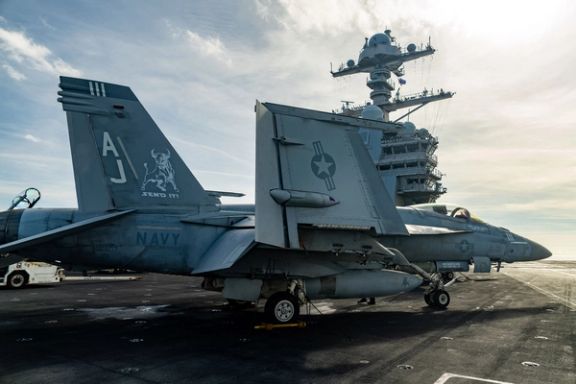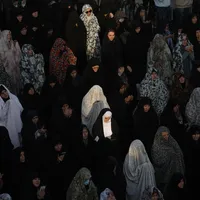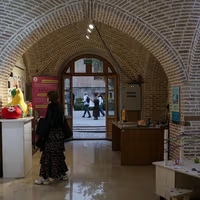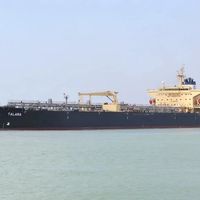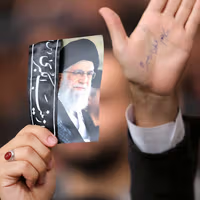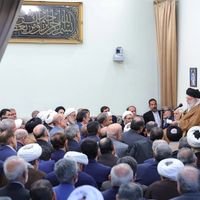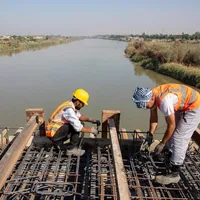Mohammad-Jafar Ghaempanah, the President’s executive deputy, told reporters after a cabinet meeting on Wednesday that Iran is “fully prepared” for any new war, though he judged it unlikely Iran's foes would “repeat the mistake”.
Ali Saeedi, head of the Supreme Leader’s Ideological-Political Office, told state media he “could not give a clear answer” on whether war will come.
“The armed forces must be fully prepared, but people should continue their lives and should not be inflamed. At present, we do not observe signs of an enemy attack.”
Flight tracking data over the weekend showed a rapid deployment of aerial refueling craft to the Al Udeid airbase in Qatar, the largest American military installation in the region.
The last large-scale movement of such assets coincided with surprise US and Israeli attacks on Iran in a brief June war. That conflict sent tens of thousands of Iranian civilians heeding Israeli warnings to flee major urban areas. Hundreds were killed.
Open-source satellite imagery and flight tracking date shows the USS Nimitz aircraft carrier and its attendant aircraft operating in the Persian Gulf and docked at Dubai's Jebel Ali port as of last month. Such port calls are largely routine.
Behnam Saeedi, secretary of parliament’s National Security Committee, rejected a link between snapback of UN sanctions and war: “Whether a war restarts or not, in the current circumstances, it has nothing to do with the snapback.”
Still, he described the situation as “not a ceasefire but a suspension of combat operations.”
Military posture: beefing up deterrence
Nour News, a news outlet close to Iran's mercurial ex-security boss Ali Shamkhani, on Tuesday framed new US deployments as a “political message” of support to regional allies and a warning to Iran that the military option is still on the table.
Chief of the General Staff Major-General Amir Mousavi declared the Army and the Revolutionary Guards maintain “extraordinary readiness for a possible future clash.”
Brigadier General Mohammad-Jafar Asadi of the Khatam al-Anbiya headquarters promised Iran would “increase the range of its missiles as far as necessary,” while maintaining that Tehran “will not initiate a war but will give a decisive response to any aggression.”
Competing calculations: low or high risk?
Journalist Hossein Yazdi assessed the probability of renewed large-scale strikes as low. He argued Iran’s nuclear sites, already hit, have not been rebuilt; Israel has extracted its revenge; and the US would likely block further escalation.
“The military phase is over,” he wrote on X, suggesting Israel is now using psychological pressure to sap Iran’s economy.
But others warn that the prospect of strikes are high.
“If you think that the deployment of this volume of armaments, refueling aircraft, fighter jets, and so on by America is random, accidental, or merely for the sake of creating fear and intimidation, congratulations," writer Mohammad-Reza Mohajer posted on X. "You are extremely optimistic, and no other event can destroy this optimism in you."
Political analyst Ali Nasri called endless speculation corrosive: “Keeping society continually struggling to ‘predict’ or ‘await’ a military attack is itself a tool of psychological warfare and collective torture of the Iranian people."
"It aims to further damage the economy and disrupt life. If there is a war, we will respond proportionately," he added on X. "For now, our challenge as citizens is to continue ordinary life.”
Street-level voices: fear, anger, fatigue
Signals of potential conflict are already being priced in Iran's moribund markets.
The rial and gold have reacted, with the dollar rate again breaking records against the prone rial and gold hitting new highs. On social media, frustration dominates.
One user lamented: “Instead of enjoying the weekend, everyone I meet talks about war and the dollar and the misery the clerics have given us!”
Another wrote: “Dollar, sanctions and the possibility of war — I really have no strength left to continue.”
